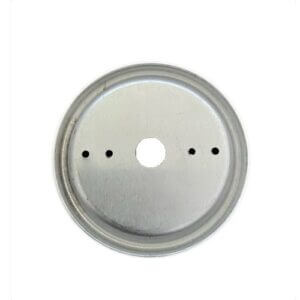Light-emitting diodes (LEDs) are semiconductor devices that convert electrical energy into light energy, but some of the electrical energy is converted into thermal energy. The temperature at which heat energy is transferred from the LED light beads to the PCB board is called the junction temperature, and the light decay or the life of the LED is directly related to its junction temperature. If the heat dissipation is not good, the junction temperature will be high and life will be short. Therefore, only by exporting heat energy as soon as possible can the temperature of the LED lights be effectively reduced. The power supply can be protected from working in a persistent high-temperature environment and avoid the LED light source premature aging due to long-term high-temperature work.
How do led light fixtures to reduce heat?
Under normal conditions, there are three ways of heat transfer: conduction, convection, and radiation. Conduction means that the heat between objects in direct contact is transferred from the one with a higher temperature to the one with a lower temperature. Convection transfers heat utilize fluid flow, while radiation does not require any medium, and the heating object releases heat directly to the surrounding space.
In practical applications, the main measure for heat dissipation of high-power LED lighting fixtures is to use a heatsink. The heat sink transfers the heat of the chip to the heat sink through precise contact with the chip surface. The heatsink is usually a thermal conductor with many fins. Its fully extended surface greatly increases the heat radiation, and the circulating air can also take away more heat energy.
Similar to the most basic Ohm’s law in circuit calculation, the calculation of heat dissipation has a most basic formula
temperature difference = thermal resistance * power consumption
In the case of a heat sink, the resistance of heat release between the heat sink and the surrounding air becomes the thermal resistance, and the magnitude of the heat flow between the heat sink and space is represented by the power consumption of the chip. In this way, due to the thermal resistance when the heat flow flows from the heatsink to the air, a certain temperature difference is generated between the heat sink and the air, just like the current flowing through the resistance will generate a voltage. Similarly, there will be a certain thermal resistance between the heatsink and the chip surface. The unit of thermal resistance is °C/W. When choosing a heat sink in addition to mechanical size considerations, the most important parameter is the thermal resistance of the heatsink. The smaller the thermal resistance, the stronger the heat dissipation capacity of the radiator.
The following is an example of the calculation of thermal resistance in circuit design:
Design requirements:
Chip power 18.4w
The maximum temperature of the chip surface temperature can not exceed 85 °C
Ambient temperature (maximum) 45°C
The thermal resistance between the heat sink and the chip is 0.1°C/W
Calculate the thermal resistance R of the required radiator
(R+0.1)*18w=85°C-45°C, get R=2°C/W
Only when the thermal resistance of the selected heat sink is less than 2°C/W, can we ensure that the chip junction temperature will not exceed 85°C. Of course, it is more professional to realize precision calculation through equipment, which is also the way we take.
what types of heat sinks?
In addition to conducting heat quickly from the heat source to the appearance of the heat sink, the main thing of any heatsink is to radiate the heat to the environment by convection and radiation. Heat conduction only deals with the way of heat transfer, and heat convection is the main function of the heat sink. The function of the heat sink is mainly affected by the ability of the heat dissipation area, shape, and natural convection intensity. The heat radiation is only an auxiliary function. Because LEDs work with high heat, aluminum alloys with higher thermal conductivity must be used. Generally, there are stamping aluminum heat sinks, extruded aluminum heat sinks, die-cast aluminum heat sinks, cold or heat forged aluminum heat sinks.
- Stamping aluminum heat sinks
During the manufacturing process, the metal fins are stamped and then welded to the base. These are commonly used in low-power lighting applications. The stamped radiator has the advantages of easy production automation and low cost. But the biggest disadvantage is poor performance. - Extruded aluminum heat sinks
Most heat sinks are made of extruded aluminum, and this process is useful for most applications. It is inexpensive and can easily specify specifications. The main disadvantage of extruded radiators is that the size is limited by the maximum width of the extrusion. - Die-casting aluminum heat sinks
It is the most common choice at present, with thermal conductivity of 70-90W/m.K, high thermal efficiency, variable shapes, and easy mechanization and automation. The die-cast aluminum heat sink is limited to thicker fins, making it ideal for natural convection applications. - Cold or heat forged aluminum heat sinks
Forged radiators are made by compressing aluminum or copper and have many applications. The radiator can be cold forged or hot forged. These products have good thermal conductivity, many choices of materials, good heat dissipation structure, small size, and lightweight. However, they are expensive to produce.


